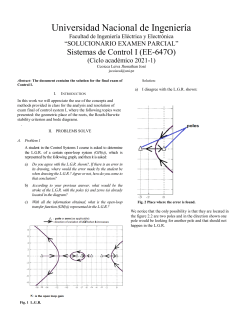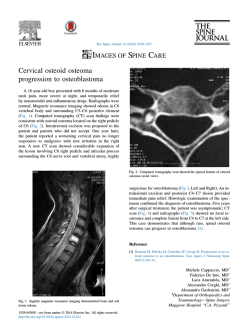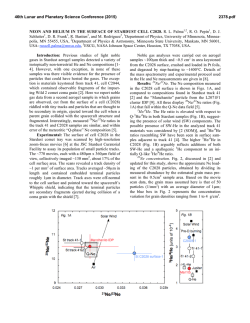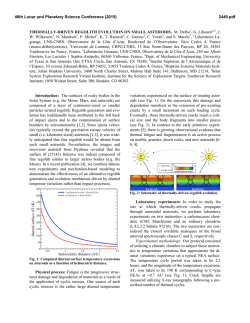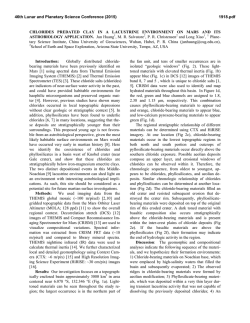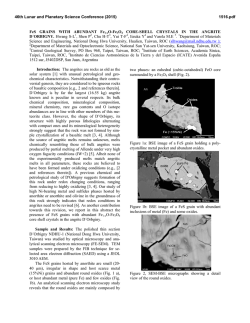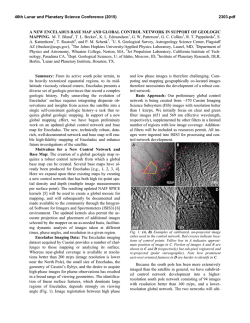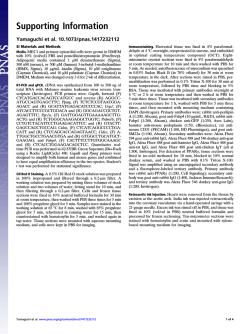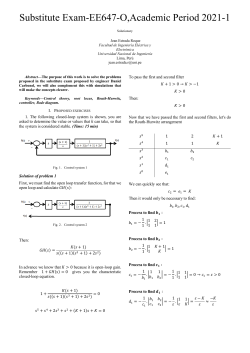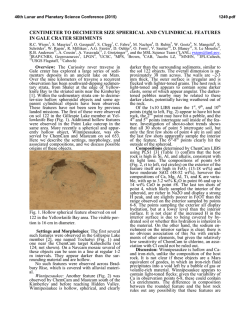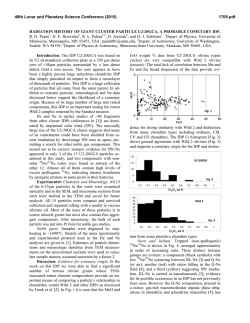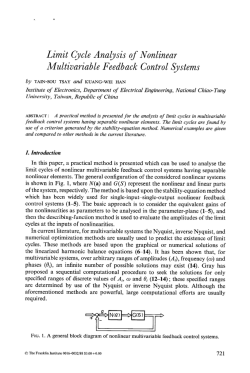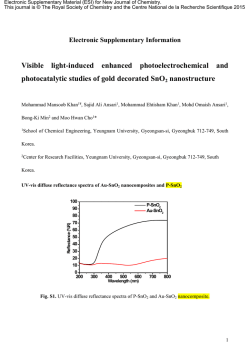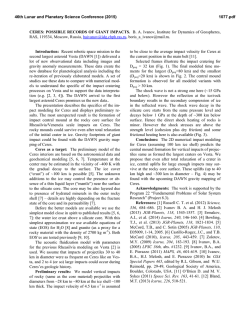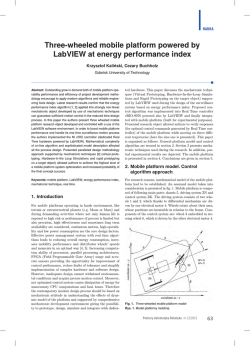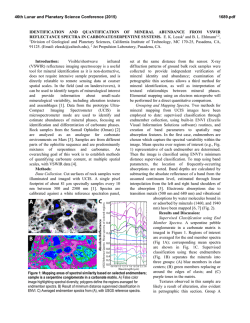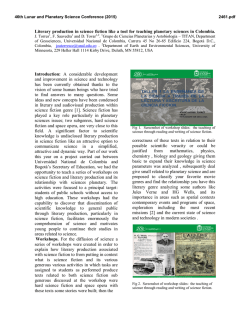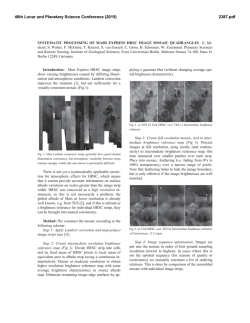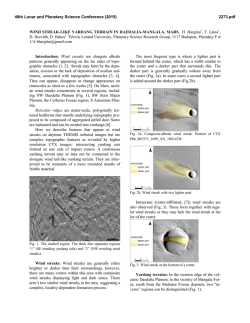
Fatigue Stress detection of VIRTIS Cryocoolers on board Rosetta. S
46th Lunar and Planetary Science Conference (2015) 1023.pdf Fatigue Stress detection of VIRTIS Cryocoolers on board Rosetta. S. Giuppi¹, F. Capaccioni¹, G. Filacchione¹, G. Piccioni¹, R. Politi¹, S. Erard², F. Tosi¹, M.T. Capria¹ - ¹IAPS, INAF, Roma, Italy, ²LESIA Observatoire de Paris, France, ([email protected]) Introduction The International Rosetta Mission is a planetary cornerstone mission of ESA and one of the most challenging ever attempted. It is devoted to the study of minor bodies of our solar system and it will be the first mission ever to land on a comet (67P/ChuryumovGerasimenko). The VIRTIS Instrument VIRTIS (Visible Infrared Thermal Imaging Spectrometer) is a spectrometer which uses two optical heads (-M,-H), respectively dedicated to the VIS-NIR imaging spectroscopy (250-5000 nm) and infrared spectroscopy (2500-5000 nm) with high spectral resolution. VIRTIS-M is the first imaging spectrometer dedicated to planetary exploration that shares the same optical system to analyze the visible (250-1050 nm) and the infrared (1000-5000 nm) spectral range. Since the satellite will be inside the tail of the comet during one of the most important phases of the mission, it would not be appropriate to use a passive cooling system, due to the high flux of contaminants on the radiator. Therefore the IR sensors are cooled by two Stirling cycle cryocoolers. The Cryocoolers VIRTIS uses two cryocoolers to keep both –M and –H IR detectors temperatures within the fixed range (< 80 K). For this purpose it was chosen the K508A Stirling microcooler produced by RICOR (Fig.3). within the thermodynamic system. This also categorizes the engine device as an external heat engine. "Regenerative" refers to the use of an internal heat exchanger called a regenerator which increases the device thermal efficiency. The Stirling cycle The idealized Stirling cycle consists of four thermodynamic processes acting on the working fluid. In the Stirling reverse cycle (Fig.2), used in cooling processes, the thermal fluxes are inverted in order to perform heat removal (QE) at cycle lowest temperature while the heat rejection (QC) is performed at highest (ambient) temperature. QR is the heat transfer performed in the regenerator. Fig.2: The Stirling Reverse Cycle RICOR K508A microcooler design is based on the integral construction of the cooler and Dewar envelope. Fig.3 shows a simplified diagram of the section of the engine. Fig.1: K508A Microcooler The RICOR K508A is an integral rotary Stirling cooler. It is a low vibration mechanical cryocooler particularly suitable for space application already used in VEX mission to cool down the VIRTIS IR detectors. It has a nominal cooling capacity of 0,5 W at 77 K. The cryocooler operation is based on a Stirling inverse cycle defined as a closed regenerative cycle with a gaseous working fluid (in this case Helium). "Closed cycle" means the working fluid is permanently contained Fig.3: Microcooler Section 46th Lunar and Planetary Science Conference (2015) Cryocooler Fatigue Stress There is a large discordance between the cryocoolers MTFF measured by RICOR during on ground tests and the one experimented in space missions. The cryocooler life expectancy, when operating in a space mission, halved compared to that measured during the on ground tests. After the analysis of the Cryocooler Power vs. Time diagrams of every set of observations acquired by VIRTIS spectrometer, we came to the conclusion that the reason of this drop in cryocoolers performance has to be found in a fatigue stress to which the cryocoolers are subjected when operating in space mission to cool IR sensors. During Rosetta mission the power absorbed by the two cryocoolers, when VIRTIS-M or VIRTIS-H or both were operating, varied around the mean value differently, depending on the operative parameters adopted in the observation (Fig.4). Fig.4: Cryocooler Power Consuption The power variation has a clearly periodical component, as it has been evidenced applying the Fast Fourier Transform (FFT) to every observation power data. In order to evaluate possible hedge effects it has been also applied the Hanning window to compare the results. Fig.5, 6 and 7 show, as example, a portion of an observation along with the power variations frequencies and their magnitudes, without and with the application of the Hanning window. Fig.5: Cryocooler Power Variations 1023.pdf Fig. 6: Cryocooler Variations Frequencies without applying the Hanning window Fig.7: Cryocooler Variations Frequencies applying the Hanning window Acknowledgements This research was conducted at INAF/IFSI and IASF institutes (Rome, Italy), supported by the Italian Space Agency, ASI-INAF Grant I/062/08/0, and under ASI/INAF Contract I/026/05/0.
© Copyright 2026

